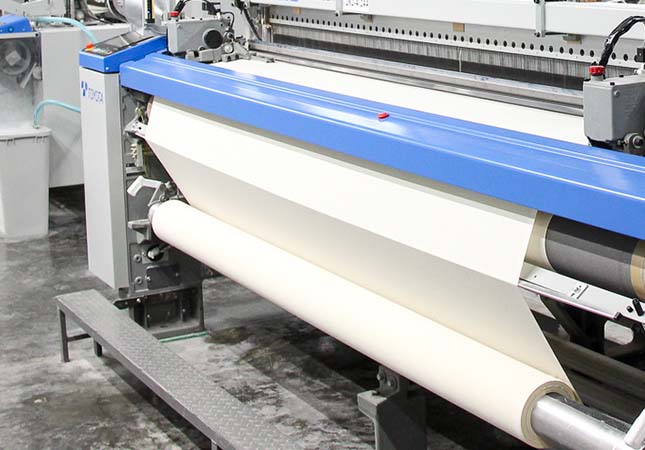Protecting the environment is one of the most pressing concerns of the 21st century. However, many everyday materials such as rubber, plastic, and synthetic fibers cannot decompose naturally and contribute to environmental pollution. To address this issue, scientists and researchers have been working to develop biodegradable polymers and related products since the 1960s. Among them, Polylactic acid (PLA) has emerged as one of the most promising solutions and was industrialized in the late 1990s.

PLA is a novel bio-based material that finds applications in a variety of fields such as apparel manufacturing, construction, and healthcare. As of 2020, the global production capacity for PLA stands at approximately 400,000 tons, indicating its growing popularity as an eco-friendly alternative to traditional plastics.
The global production capacity of polylactic acid (PLA) is measured in millions of tons. In terms of demand, the market size for PLA was valued at USD 660.8 million in 2019, owing to its various promising applications. It is projected that the PLA market will maintain a Compound Annual Growth Rate (CAGR) of 7.5% from 2021 to 2026, with the global market size for PLA expected to reach USD 1.1 billion by 2026. These figures highlight the increasing adoption of PLA as a sustainable and eco-friendly alternative to conventional plastics.
PLA Nonwoven has a Promising Application
The majority of nonwoven fabrics available in the market are produced using non-renewable and non-degradable petroleum-based chemical fibers. In contrast, Polylactic acid (PLA) offers several advantages such as good biodegradability, biocompatibility, thermal stability, solvent resistance, and ease of processing. When exposed to bacteria and water in the natural environment, PLA can completely break down into harmless substances like carbon dioxide and water. As a result, it can effectively address the problem of "white pollution."
Moreover, PLA's raw material, lactic acid, can be produced at a large scale by fermenting food crops like corn. This means that it is possible to break free from dependence on oil resources and shift towards a non-polluting and renewable resource. Consequently, PLA nonwoven fabrics are more environmentally friendly compared to other nonwoven fabrics.
Polylactic acid (PLA) boasts of several advantages such as high strength and modulus, making it possible to process and produce through various traditional methods such as extrusion, melt spinning, liquid spinning, and blow molding. Additionally, PLA nonwoven fabrics possess features such as softness, strong adsorption, moisturizing, breathability, and antibacterial properties. They are a premium material that is pure, safe, healthy, skin-friendly, and offer various biological properties that are unmatched by other substrates. Therefore, PLA nonwoven fabrics are an ideal substrate for high-quality facial masks.
PLA nonwoven fabrics find wide-ranging applications such as in the production of sterilization wraps, masks, diapers, civil wipes, wet face towels, beauty products, sanitary napkins, sanitary pads, and disposable sanitary cloths.
To produce PLA nonwoven fabric, the raw material used is polylactic acid, which is obtained from starch raw materials sourced from renewable plant resources such as corn, cassava, and others. The production process involves saccharification of starch raw materials to obtain glucose, fermentation of glucose with specific bacterial strains to produce high-purity lactic acid, and finally, synthesizing polylactic acid with a specific molecular weight using chemical synthesis methods.
PLA nonwoven fabric is made by carding PLA fiber with a skin core structure into a web and then using hot air to set it. The bonding process during hot air setting is divided into four stages: heat transfer, flow, diffusion, and pressurized cooling.
PLA in the melting process, with the heating temperature rising, under the action of temperature and pressure first melt part, accompanied by the flow of polymer, diffusion, so that the fiber intersections bonded together. After cooling, the molten polymers solidify and form a spatial three-dimensional bonding structure in the form of dots.
Therefore, PLA nonwoven production technology is similar to spunbond technology, but more complex than spunbond technology, and belongs to a relatively new field. If you would like to produce a PLA nonwoven that meets high standard of the market, you’d better to choose equipment that is specialized in the production of PLA non-woven fabric.SUNTECH, is a professional brand under Strength Machinery engaged in nonwoven manufacturing machines and finished product machines, including spunbond, spunmelt, meltblown machine, spunlace, baby care, feminine care, adult incontinence and mask machines. Our STair and STeco technology achieved the integration of technology with manufacturing, featured with high speed, stability, efficiency, and high automation. Today, we have more than 4500 customers worldwide and cooperate with over 100 countries, providing top quality machinery equipment applied in a wide range of industries like textile, hygiene and health, acquiring a reliable reputation among our customers worldwide.
SUNTECH Textile Machinery cares about global environmental protection and and has been studying PLA technology for many years, integrating PLA technology into spunbond nonwoven production lines, collecting and studying common problems in PLA nonwoven production, and improving equipment for these production problems at the beginning of design, our PLA spunbond non-woven machine adopts our leading technology, and the material produced is fine and uniform, which can improve the utilization rate of PLA raw materials, ensuring the filtering and permeability of the nonwoven, reducing downtime, and realizing the efficient and high-quality production of PLA nonwoven as well. Please feel free to contact us if you have any inquiries. We are ready to be your development partner always, empowering your success.
SUNTECH Textile Machinery is a distinguished manufacturer of textile machinery with a rich legacy of automation and intelligent manufacturing technology for textile and warehousing equipment. SUNTECH's state-of-the-art core technologies have garnered global recognition.
SUNTECH Textile Machinery has the range of products encompasses almost all fabric types, including but not limited to pinking machine, non-woven machine, beam truck, meltblown machine, fabric cutting machine, motorized beam trolley, beam storage, and fabric inspection machine. SUNTECH Textile Machinery continues to lead the textile industry with its innovative approach and extensive experience. We welcomes quotes and cooperation opportunities with open arms.




